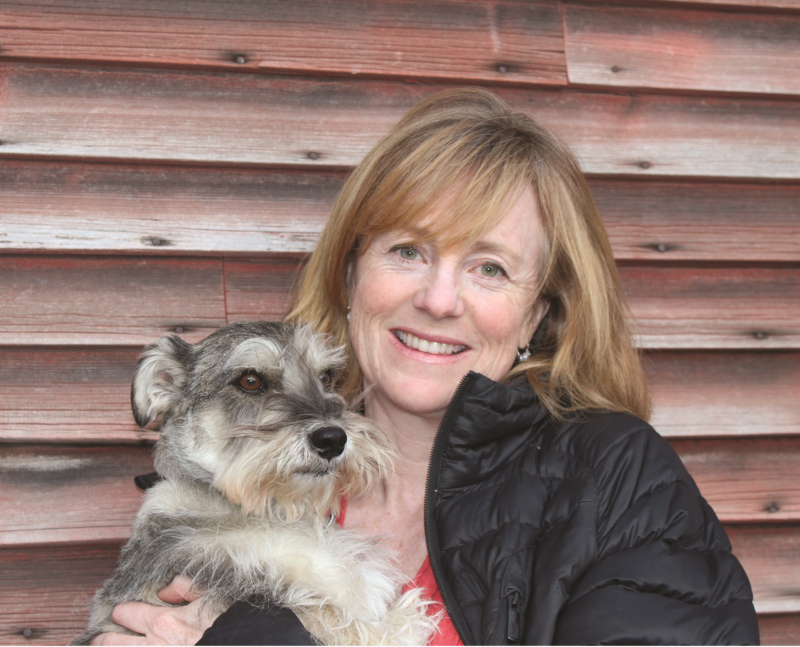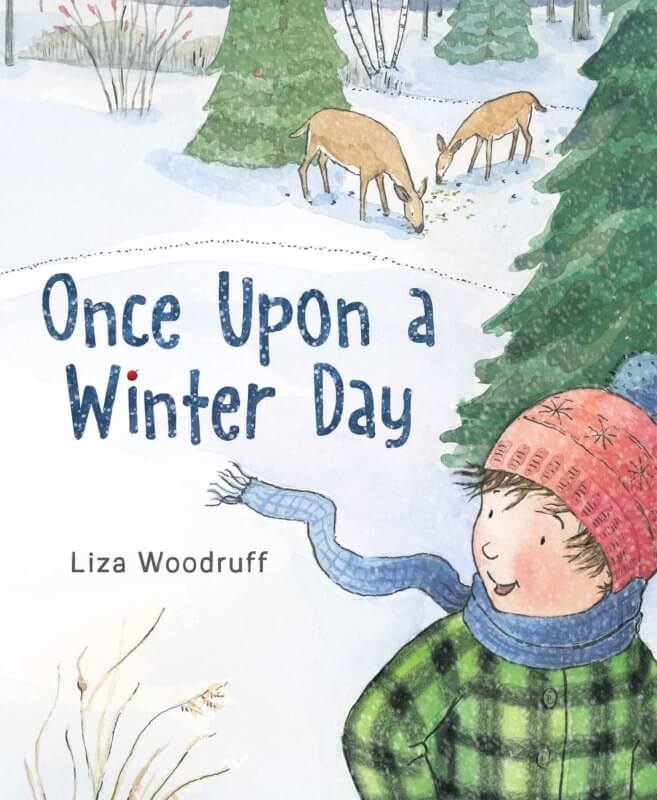Just in time for the holidays, it’s Once Upon a Winter Day
Just in time for the holidays, it’s Once Upon a Winter Day

A Q&A with local illustrator and author Liza Woodruff
Her children’s book just came out to starred reviews, and her clever, sweet characters and pictures appeal just as much to older readers as young ones. Once Upon a Winter Day illustrator and author Liza Woodruff gives us a peek into what it’s like to create a book for kids.
When you’re writing a book, do you come up with a story first or your illustration ideas first?
I have worked as an illustrator for 24 years compared to my 5 years writing picture books. Since writing is still the hard part for me, I always start with the story. I write and rewrite until the manuscript works. When the story is mostly complete, I start sketching. At that point, I can go back and forth, adjusting the images and text until they work well together.
What do you do when you get stuck in your writing? Is there such a thing as illustrator’s block and what do you do about that, too?
I have found that what most often gets my writing unblocked is more writing. I just need to keep working. Sometimes, when I’m stuck on dialog or plot, I read what I have written right before going on a walk. While walking, my mind wanders, often solving the problem by the time I get home.
Illustrators block is a bit different. I have creative dry spells at times. I find sometimes that working with a new medium can be helpful. Without the skills acquired from regular practice, I can let go of my expectations and work more experimentally. I get a lot of new ideas this way.
 Do you test-drive your books with kids before you send them off to your agent/publisher?
Do you test-drive your books with kids before you send them off to your agent/publisher?
Sometimes I do, but more often I test them out on my writer friends and my family. Multiple readers can give me insight into things I have missed or mistakes I have made. I like to have things pretty polished by the time I send my work to my agent. I need to convince her that what I am working on will be worth sharing with an editor.
What are your inspirations for your work—seems like our beautiful Vermont outdoors might have a hand? How did you come upon the idea for Once Upon a Winter Day?
I am always inspired by our beautiful landscape and the wildlife here in Vermont. As for what inspired Once Upon a Winter Day, there was a program at Charlotte Central School when our kids were little called Four Winds. I volunteered with other parents to learn and then teach science units to the kids. Two units that particularly interested me were about deer and animal tracks. These lessons inspired me to look closely at the stories found in the snow. Now, I always look for tracks while I’m outside and wonder what has happened before I arrived.
Do you do a lot of snacking while you’re working and if so, what snacks?
I do lots of snacking. Sometimes it’s because I am hungry and sometimes I am just procrastinating. I snack on anything from popcorn to cookies to fruits and veggies.
People frequently say things like, “I could write a children’s book, it seems pretty easy,” and I know this is the opposite of true. What are some of the challenges of this work?
I think people think that with the low word count of a picture book and the young audience, writing a picture book should be easy. The thing is, all the elements of longer stories must go into a picture book in fewer words. Plot, tension, conflict, character development, resolution. . . all these things need to be present in a successful picture book.
In addition to the task of writing a concise book, children’s book authors need to come up with original and interesting stories. Children are smart and discriminating. It can be tempting for an author to write didactic stories, but kids can sniff out tales laced with moral lessons. Because their lives are filled with instruction coming from adults, those stories don’t appeal much. They prefer relatable stories that provide escape, comfort, a view into other experiences or a reflection of their own.
What are your favorite children’s books?
I have so many favorite children’s books, but here are a few: Harry the Dirty Dog, Officer Buckle and Gloria, Chicka Chicka Boom Boom, and George and Martha.
What do you do when you’re not working?
When not working, I enjoy spending time with my family and friends. I love to be outdoors, hiking, biking, skiing, sailing or walking my dogs, and, of course, I love to read.
What are you working on now, if you’re okay to share that? Right now, I am working on a story about a vernal pool told from the perspective of a wood frog tadpole.
What books do you like to read for fun?
I love to read all kinds of books, but generally I read adult fiction with some middle grade and young adult books mixed in. My favorite book of 2020 is Deacon King Kong.
What do you think about when you think about connecting with kids through your work—what are the elements of story and drawing that help you make that connection?
I try to remember how it felt to be a child.
For example, I remember being too small to help, but really wanting to, or trying to communicate something that felt really important to me but being dismissed because I was just a kid. Since these themes are universal to most children, they are a good way to connect.
I also remember the books that my children loved. They pored over illustrations with lots of details and subplots (remember Richard Scarry’s Goldbug?). Before they are able to read independently, kids love to enjoy books through these kinds of details.
I think about all these things when I am coming up with my own stories.
Related Stories
Popular Stories
If you enjoy The Charlotte News, please consider making a donation. Your gift will help us produce more stories like this. The majority of our budget comes from charitable contributions. Your gift helps sustain The Charlotte News, keeping it a free service for everyone in town. Thank you.
Andrew Zehner, Board Chair








